




When it comes to doing laundry, one of the key decisions many people face is choosing the right temperature setting for their washing machine. The debate between washing at 30 or 40°C has been a topic of discussion for a long time, with different opinions and recommendations.
Experts suggest that washing at lower temperatures, such as 30°C, is more environmentally friendly and can help save energy and reduce carbon emissions. Additionally, washing at lower temperatures can also help preserve the quality and lifespan of your clothes, as high heat can cause damage and fading.
On the other hand, some experts argue that washing at higher temperatures, such as 40°C, can be more effective in removing tough stains and killing bacteria. They believe that higher temperatures can provide a deeper level of cleanliness and help eliminate allergens that may be present in the fabrics.
Ultimately, the decision between washing at 30 or 40°C depends on several factors, including the type of fabric, the level of dirtiness, and personal preferences. It is recommended to follow the care instructions on clothing labels and use the appropriate temperature setting accordingly.
Expert Tip: If you are unsure and want to strike a balance between energy efficiency and cleanliness, you can consider washing most of your clothes at 30°C and only using a higher temperature for items that require a more thorough cleaning, such as bedding, towels, and heavily soiled garments.
Expert Advice and Recommendations: Choosing the Right Washing Temperature
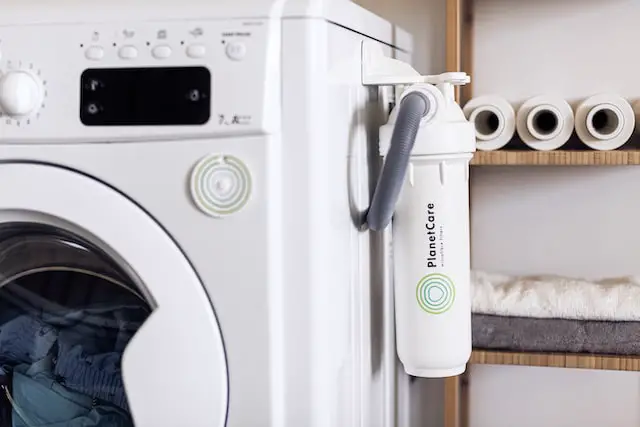
When it comes to doing laundry, one of the decisions you’ll have to make is what temperature to wash your clothes at. While many people default to using a higher temperature, experts suggest that a lower temperature can be just as effective at cleaning your clothes while also being more eco-friendly.
Why is washing at a lower temperature better?
There are several reasons why washing at a lower temperature is recommended:
- Energy efficiency: Washing at a lower temperature, such as 30°C or even 20°C, uses less energy compared to higher temperatures. This helps reduce your energy consumption and lower your utility bills.
- Protection of fabric: Hot water can cause clothes to fade, shrink, or lose their shape over time. Washing at a lower temperature helps preserve the quality and lifespan of your garments.
- Environmental impact: By using less energy to heat the water, washing at a lower temperature helps reduce carbon emissions and minimize your impact on the environment.
When should you use a higher temperature?

While washing at a lower temperature is generally recommended, there are some instances where using a higher temperature may be necessary:
- Stains and dirt: For stains and heavily soiled items, a higher temperature may be needed to effectively remove dirt and grime. Refer to the garment’s care label for instructions on the maximum recommended temperature.
- Illness or hygiene: When dealing with bed linens, towels, or clothes contaminated with bacteria or viruses, a higher temperature, such as 60°C or 90°C, may be necessary to ensure proper sanitation.
Tips for washing different types of clothes at lower temperatures
Here are some tips to keep in mind when washing clothes at lower temperatures:
- Choose the right detergent: Look for detergents that are specifically designed for cold water washing. These detergents are formulated to work effectively at lower temperatures.
- Pre-treat stains: If you have a stain that requires higher temperatures to remove, pre-treat it before putting it in the washing machine. This can help minimize the need for higher temperature washes.
- Sort your laundry: Sort your laundry based on color and fabric type to prevent color bleeding and damage to delicate items.
- Use the correct cycle: Use a gentle or delicate cycle for delicate fabrics and a normal cycle for sturdier items.
- Avoid overloading the machine: Overloading the machine can prevent clothes from getting clean. Leave enough space for movement and proper cleaning.
In conclusion, choosing the right washing temperature is important for both effective cleaning and environmental impact. Washing at a lower temperature can save energy, protect your clothes, and reduce your carbon footprint. However, there are instances where higher temperatures may be necessary, such as for stains or hygiene purposes. By following these expert recommendations, you can make informed decisions and achieve the best results for your laundry.
The Impact of Temperature on Cleaning Efficiency
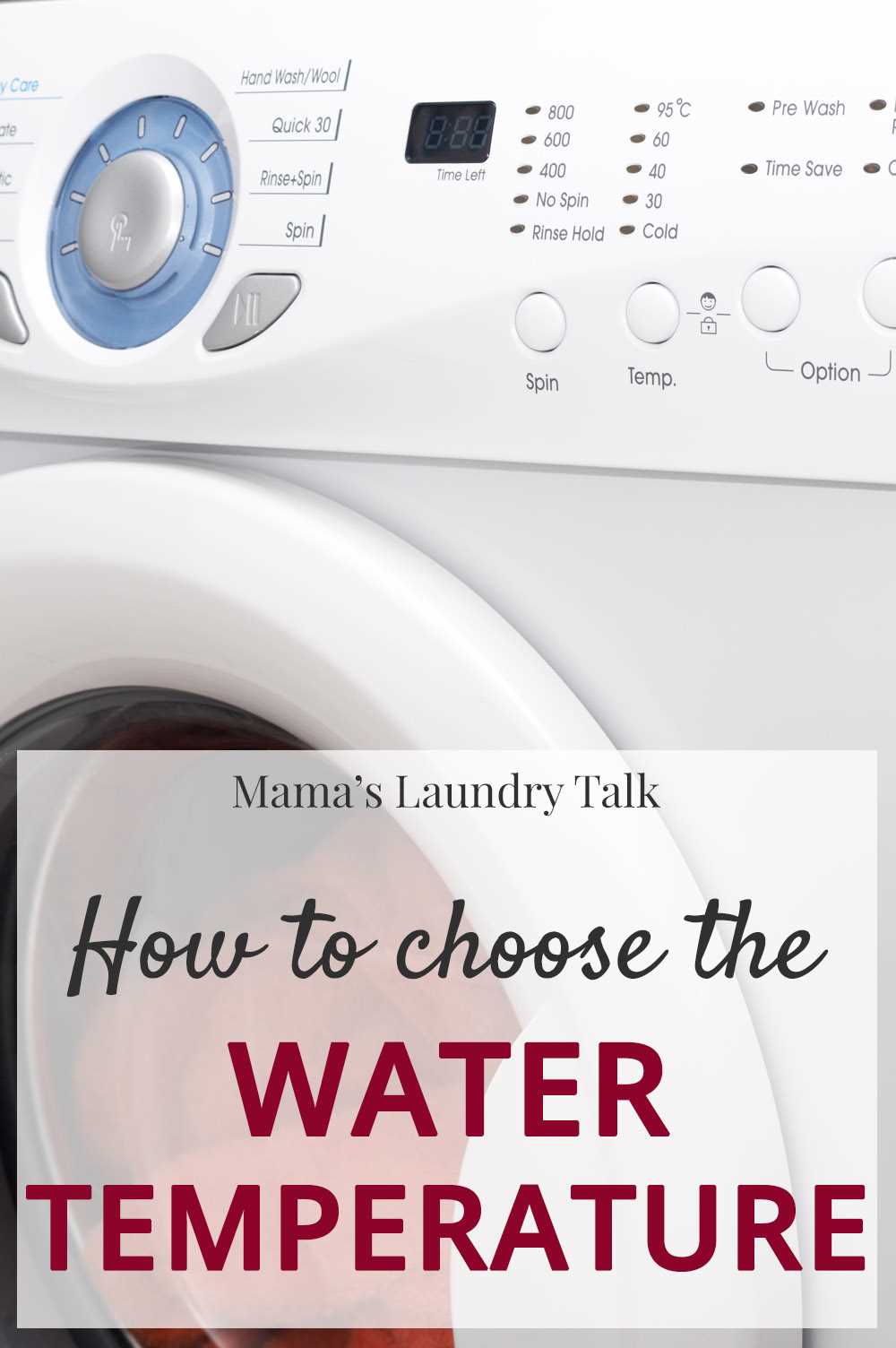
When it comes to washing clothes, one of the key factors that affect cleaning efficiency is the temperature of the water. Different temperatures have different effects on how well dirt and stains are removed from fabrics. In this article, we will explore the impact of temperature on cleaning efficiency and provide some expert advice and recommendations.
Hot Water (40°C and above)
Washing clothes in hot water, typically at a temperature of 40°C and above, is known to be more effective in removing tough stains and killing bacteria. The heat helps to break down dirt and oils, making it easier to remove them from clothing fibers. Additionally, hot water can help to eliminate any allergens that may be present in the fabrics.
While hot water can be great for heavily soiled or stained clothing, it may not be suitable for all fabrics. Delicate materials, such as silk or wool, may shrink or become damaged when exposed to high temperatures. It is important to check the care label on your clothing before washing them in hot water to avoid any mishaps.
Warm Water (30-40°C)
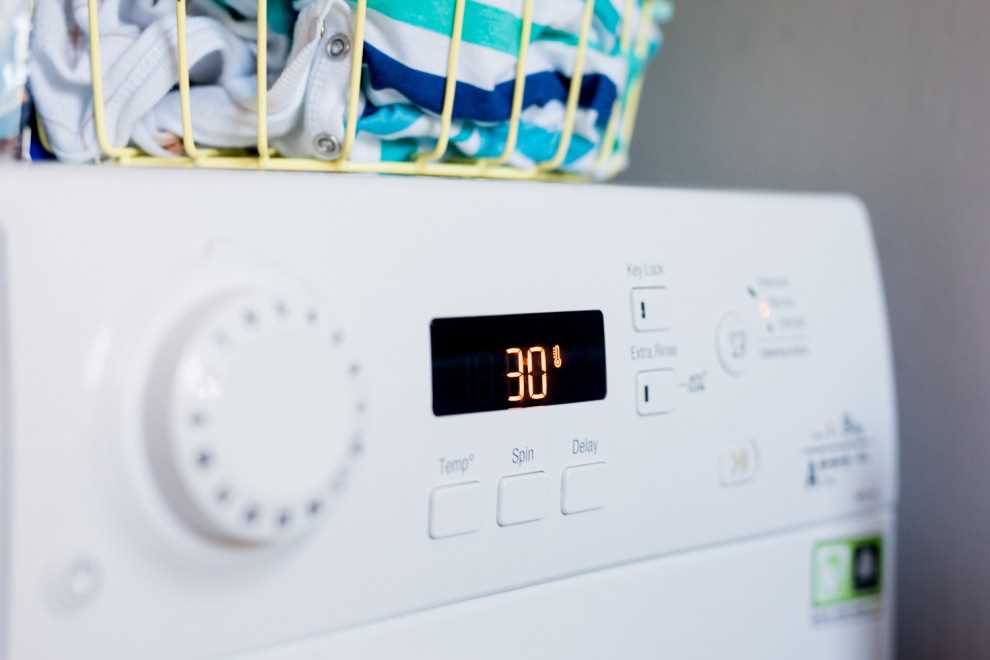
Using warm water, typically at a temperature between 30-40°C, is a good balance between cleaning effectiveness and fabric care. Warm water helps to activate detergents, allowing them to penetrate fabrics and remove dirt and stains effectively. It is generally recommended for everyday laundry needs, particularly for colored fabrics and moderately soiled clothes.
Many modern washing machines also offer a specific temperature setting for a 30°C wash. This is because detergents nowadays have improved formulations that are designed to work effectively at lower temperatures. Washing at this temperature not only saves energy but also helps to extend the life of your clothing.
Cold Water (Below 30°C)
Washing clothes in cold water, typically below 30°C, is becoming increasingly popular due to its energy-saving benefits. While it may not be as effective in removing tough stains, cold water can still clean everyday dirt and stains effectively. This temperature is recommended for delicate fabrics, such as silk or gym wear, which can be damaged by hot or warm water.
Cold water washing is also suitable for lightly soiled clothes or dark-colored fabrics that may be prone to fading. It is important to use a good quality detergent specifically formulated for cold water to ensure optimal cleaning results.
Conclusion
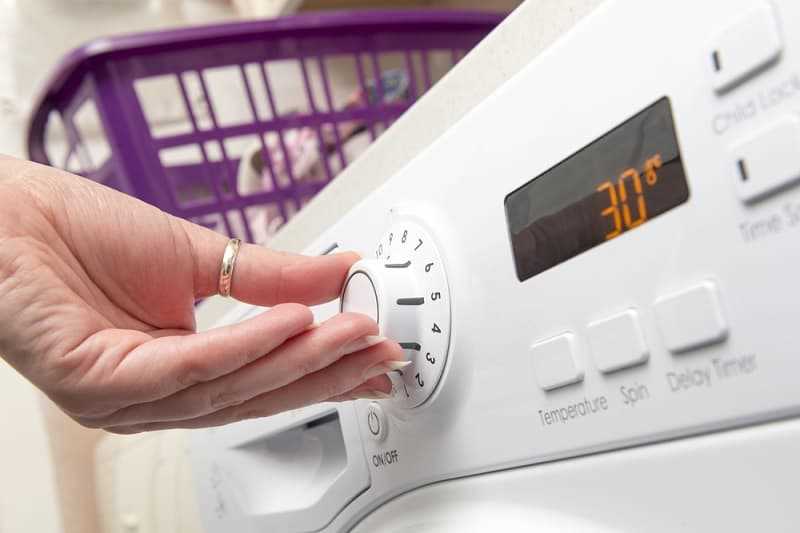
In conclusion, the temperature of the water you use to wash your clothes can have a significant impact on cleaning efficiency. Hot water is best for heavily soiled or stained items, while warm water offers a good balance between cleaning effectiveness and fabric care. Cold water is ideal for delicate fabrics and lightly soiled clothes, as well as for energy-saving purposes.
Ultimately, it is important to consider the fabric type, level of soiling, and any specific care instructions when choosing the appropriate temperature for your laundry. Experimenting with different temperature settings can help you find the best balance between cleanliness and fabric care for your clothing.
Factors to Consider when Choosing a Washing Temperature
When it comes to choosing a washing temperature, there are several factors to consider. The right temperature can help to ensure that your clothes are cleaned effectively, while also minimizing the risk of damage. Here are some important factors to keep in mind:
- Fabric type: Different fabrics require different washing temperatures. Delicate fabrics such as silk and wool generally require lower temperatures, while more durable fabrics like cotton can tolerate higher temperatures.
- Soil level: The level of dirt and stains on your clothes can also influence the appropriate washing temperature. Heavily soiled garments may require a higher temperature to effectively remove stains, while lightly soiled items can be washed at a lower temperature.
- Colour fastness: Some clothes are more prone to color fading or bleeding. In this case, it is recommended to wash them at a lower temperature to minimize the risk of color transfer.
- Eco-friendly considerations: Washing clothes at lower temperatures, such as 30°C, can help to reduce energy consumption and lower your carbon footprint. If you prioritize environmental sustainability, choosing a lower temperature may be the best option for you.
- Bacterial disinfection: Washing clothes at higher temperatures, such as 40°C or above, can help to kill bacteria and germs. This is particularly important for items like underwear, towels, and bedding.
It’s also important to check the care labels on your clothes for specific washing temperature recommendations. Some garments may require cold water washing only, while others may specify a maximum temperature for washing. Following the care instructions will help to ensure that your clothes are cleaned effectively without causing any damage.
| Temperature | Advantages | Disadvantages |
|---|---|---|
| 30°C |
|
|
| 40°C |
|
|
In conclusion, when choosing a washing temperature, it’s important to consider the fabric type, soil level, color fastness, eco-friendly considerations, and the need for bacterial disinfection. Carefully evaluating these factors will help you determine the best temperature for washing your clothes, ensuring both cleanliness and longevity.
Pros and Cons of Washing at 30°C
- Pros:
- Energy savings: Washing at lower temperatures, such as 30°C, can save a significant amount of energy compared to washing at higher temperatures. This can help reduce your energy bills and decrease your carbon footprint.
- Gentler on fabrics: Washing at lower temperatures is generally more gentle on fabrics, especially delicate and sensitive materials. This can help prolong the lifespan of your clothes and prevent them from shrinking or fading.
- Less risk of color bleeding: Washing at lower temperatures reduces the risk of color bleeding, especially for dark or vibrant colored garments. This can help maintain the original colors of your clothes and prevent them from staining other items in the wash.
- Environmental benefits: Washing at lower temperatures saves water and reduces carbon dioxide emissions. This can contribute to a more sustainable and eco-friendly laundry routine.
- Suitable for lightly soiled items: Washing at 30°C is generally sufficient for lightly soiled items that don’t have stubborn stains or heavy dirt. It can effectively remove everyday dirt and grime without the need for higher temperatures.
- Cons:
- Less effective against stains: Washing at lower temperatures might not be as effective in removing stubborn stains, especially oily or greasy ones. Higher temperatures help break down and dissolve stains more effectively.
- Potential for bacterial growth: Washing at lower temperatures might not kill all bacteria and germs present on heavily soiled items. This can be a concern, especially for items that come into direct contact with your skin, such as underwear or towels.
- Longer washing time: Washing at lower temperatures often requires a longer cycle time compared to higher temperature washes. This is because it takes more time for the detergent to activate and remove dirt at lower temperatures.
In conclusion, washing at 30°C has numerous benefits such as energy savings, gentler treatment of fabrics, less risk of color bleeding, and environmental advantages. However, it might not be as effective against stubborn stains and can potentially allow for bacterial growth on heavily soiled items. Consider the level of dirt and stains on your clothes before deciding on the appropriate temperature for your wash cycle.
Pros and Cons of Washing at 40°C
Washing at 40°C can have several advantages and disadvantages depending on the type of clothing and the specific situation. Here are some pros and cons to consider when deciding whether to wash at 40°C.
Pros:
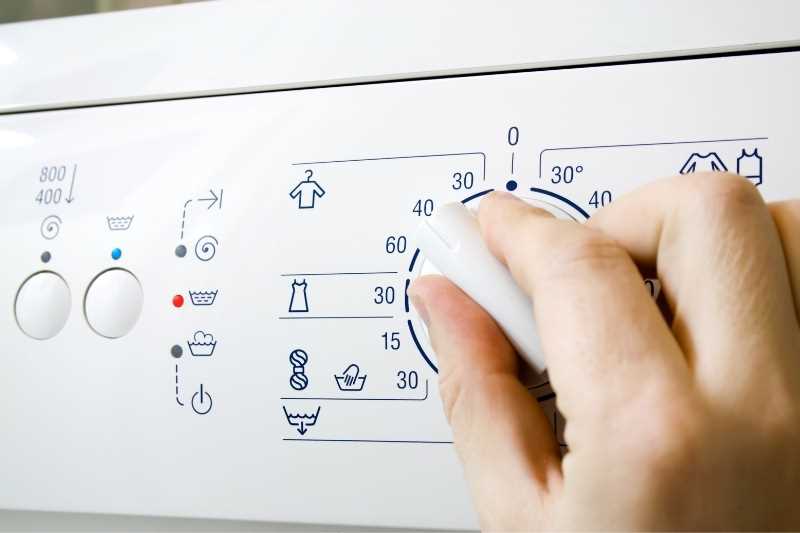
- Effective at removing stains: Washing at higher temperatures can provide better stain removal compared to washing at lower temperatures. The increased heat helps to break down and dissolve stains more effectively.
- Improved hygiene: Washing at 40°C can help kill certain types of bacteria and allergens, providing a higher level of hygiene compared to lower temperatures.
- Faster drying time: Clothes washed at higher temperatures tend to dry faster, which can be beneficial if you need your laundry to dry quickly.
Cons:

- Increased energy consumption: Washing at 40°C requires more energy compared to washing at lower temperatures, resulting in higher energy bills and a larger carbon footprint.
- Color fading: Certain fabrics and dyes may be more prone to fading or bleeding at higher temperatures, leading to a loss of color intensity and possible damage to the clothing.
- Shorter lifespan of clothing: Washing at higher temperatures can cause more wear and tear on the fabric, leading to a shorter lifespan for your clothes.
Ultimately, the decision to wash at 40°C depends on a variety of factors, such as the type of clothing, level of stains, personal preference, and environmental concerns. It is recommended to carefully read and follow the washing instructions on the garment labels to determine the appropriate temperature for washing.
Expert Recommendations and Best Practices
1. Follow the garment label instructions
One of the most important factors in determining the temperature at which to wash your clothes is the instructions provided on the garment label. Manufacturers typically include recommendations for the maximum temperature that can be used when washing the item. It is important to follow these guidelines to ensure that your clothes are not damaged during the washing process.
2. Consider the level of dirt and stains
The temperature at which you wash your clothes should also be influenced by the level of dirt and stains on the garments. In general, higher temperatures are more effective at removing tough stains, but they can also cause damage to delicate fabrics. If your clothes are lightly soiled, washing them at a lower temperature such as 30°C may be sufficient. However, for heavily soiled items, a higher temperature of 40°C may be necessary to ensure a thorough clean.
3. Use the right detergent
Choosing the right detergent for your laundry can make a significant difference in the effectiveness of the wash cycle. Some detergents are specifically formulated for use at lower temperatures, while others are designed for higher temperature washes. When washing at 30°C or 40°C, be sure to use a detergent that is suitable for the selected temperature to achieve the best results.
4. Separate your laundry

Separating your laundry by fabric type and color can help prevent damage and preserve the quality of your clothes. Different fabrics and colors may require different wash temperatures, so sorting your laundry beforehand can help ensure that each item is washed at the appropriate temperature. This practice can also help prevent color bleeding and fading.
5. Use cold water for delicate items
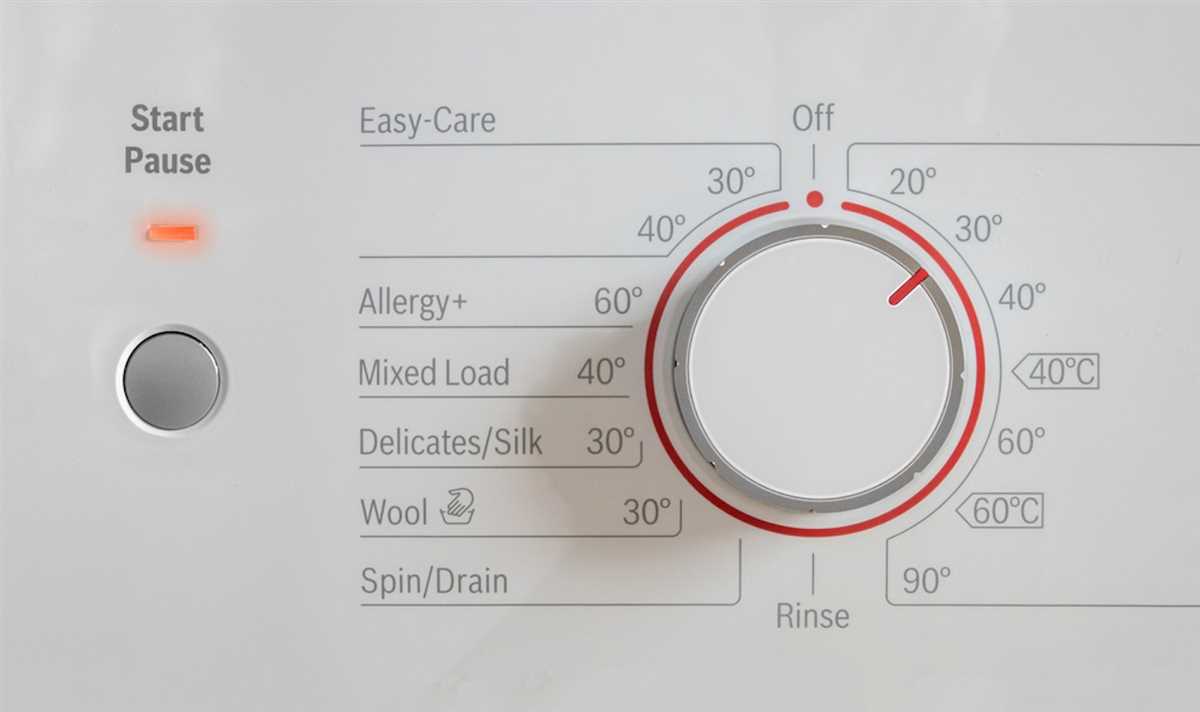
For delicate fabrics such as silk or wool, it is generally recommended to wash them at even lower temperatures or using cold water. These fabrics can be more sensitive to heat and may shrink or become damaged when exposed to higher temperatures. Always refer to the garment label for specific instructions on washing delicate items.
6. Consider energy efficiency
Washing at lower temperatures, such as 30°C, can help reduce energy consumption and lower your utility bills. However, keep in mind that some types of stains and bacteria may require higher temperatures to be effectively removed. Finding a balance between energy efficiency and cleanliness is important when deciding on the wash temperature.
7. Regularly clean your washing machine
To ensure that your clothes are being washed effectively, it is important to regularly clean your washing machine. Over time, detergent residues, limescale, and bacteria can build up in the machine, reducing its efficiency. Follow the manufacturer’s instructions on how to clean your washing machine and remove any built-up dirt or odors.
8. Hang or fold your clothes properly after washing
Once your clothes have been washed, make sure to hang or fold them properly to avoid wrinkles and prolong their lifespan. Hanging your clothes can help them dry faster and reduce the need for ironing. Take care to follow the specific care instructions for each garment to ensure that they are stored or worn in the best way.
Following these expert recommendations and best practices can help ensure that your clothes are washed effectively and maintain their quality for longer. By considering factors such as garment label instructions, stain level, detergent selection, and energy efficiency, you can make informed decisions about the temperature at which to wash your clothes.
FAQ
What is the difference between washing at 30 and 40°C?
Washing at 30°C is a more energy-efficient option compared to washing at 40°C. However, washing at 40°C can provide a more thorough cleaning and is better for certain types of stains or garments.
Does washing at 30°C kill bacteria?
Washing at 30°C can help remove bacteria and dirt from your clothes, but it may not completely kill all types of bacteria. Washing at higher temperatures, such as 60°C or above, is more effective in killing bacteria.
Is it safe to wash all types of clothes at 30°C?
Most clothes can be washed safely at 30°C, but some delicate fabrics or heavily stained garments may require higher temperatures. It’s important to read the care labels on your clothes to determine the recommended washing temperature.
Will washing at 30°C save me money on my energy bills?
Yes, washing at 30°C instead of 40°C can save you money on your energy bills. Washing at lower temperatures uses less electricity and can help reduce your overall energy consumption.
Can washing at 40°C damage my clothes?
Washing at 40°C is generally safe for most types of clothes, but some delicate fabrics may be prone to shrinkage or damage at higher temperatures. It’s best to check the care labels on your clothes and use a lower temperature if necessary.














